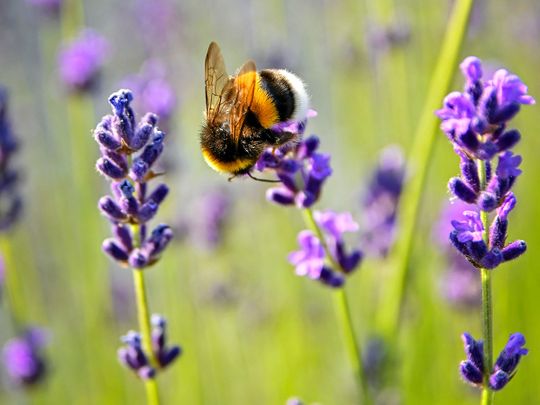
Love to eat? Then you’ll have to thank insects, especially pollinators like honeybees that help plants to grow and produce food.
Click start to play today’s Crossword, where one of the clues asks you to identify what bees make (5-Down).
According to US-based environmental organisation Green Peace, 70 out of the top 100 human food crops, which provide about 90 per cent of the world’s nutrition, are pollinated by bees. But it’s no secret that bees are dying out. Just last year, beekeepers in the US lost an estimated 45.5 per cent of their managed honeybee colonies, according to a survey conducted by the US-based nonprofit Bee Informed Partnership.
Bees are facing threats from a variety of factors – pesticides, drought, habitat destruction, air pollution, and global warming. The bottom line is that something must be done.
Here are five ways you can contribute to help bees and other pollinators at home:
1. Choose native plants
Select indigenous plants in a variety of shapes and colours to encourage diversity. These plants will better adapt to the local climate than their exotic counterparts. And since there are some 20,000 bee species in existence, ranging from two millimetres to 2.5 centimetres long, the blossoms you plant in your garden should likely vary in size and species too.
2. Make it bloom
Ensure something in your garden blooms each season. Some bee species are active all year, while others only pollinate in April and May. UAE’s native honey bee is the apis florea, also called the Arabian or Asian dwarf honeybee – a tiny red-brown bee that typically measures between 7mm and 10mm. It visits a broad range of plants for food, and you might even spot it in your garden!
3. Plant milkweed
Adding milkweed to your garden can provide food for bees, monarch butterflies and caterpillars, and serve as a great source of nectar for flowers that bloom in late summer. A shrub that’s native to North Africa, it’s suitable for UAE climates, and is easily recognisable because of its upright stem, and attractive purple flowers. However, because it is often considered a weed, and its latex-coated leaves can cause skin irritation, the plant is rarely cultivated.
4. Hold the mulch
Leave a little bare ground in your garden for the bees. Most species of these insects are solitary creatures, and according to National Geographic, 70 per cent of them dig a nest in the ground to raise their young. But if mulch is in the way, they are unable to do so.
5. Set up a border
At the borders of your fruit patch, plant native flowers. Do the same with your vegetable patch. This way, you can improve pollination of your crops, and support the bees when the plants stop blooming. The set up also attracts other pollinators such as wasps and hover flies, which control crop pests.
Other things you can do to support bees is to swear off pesticides in your garden, and use natural pest repellents, like basil for tomatoes and garlic for aphids. Plant bee hotels and get involved in local organisations that support pollinators! It all goes a long way to helping the world’s endangered insect.
Does your garden attract pollinators? Play today’s Crossword and tell us at games@gulfnews.com.








